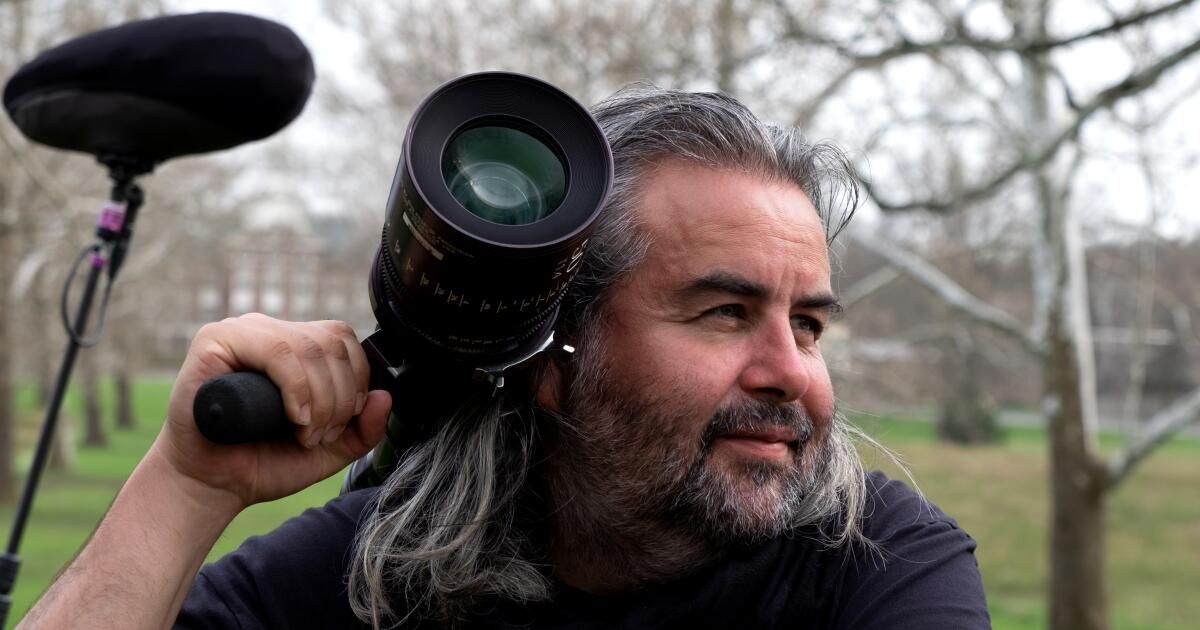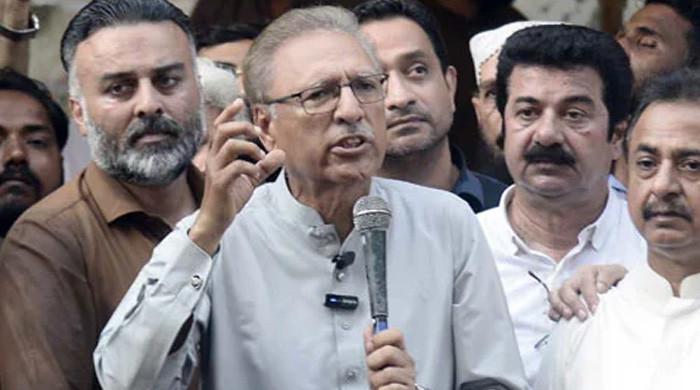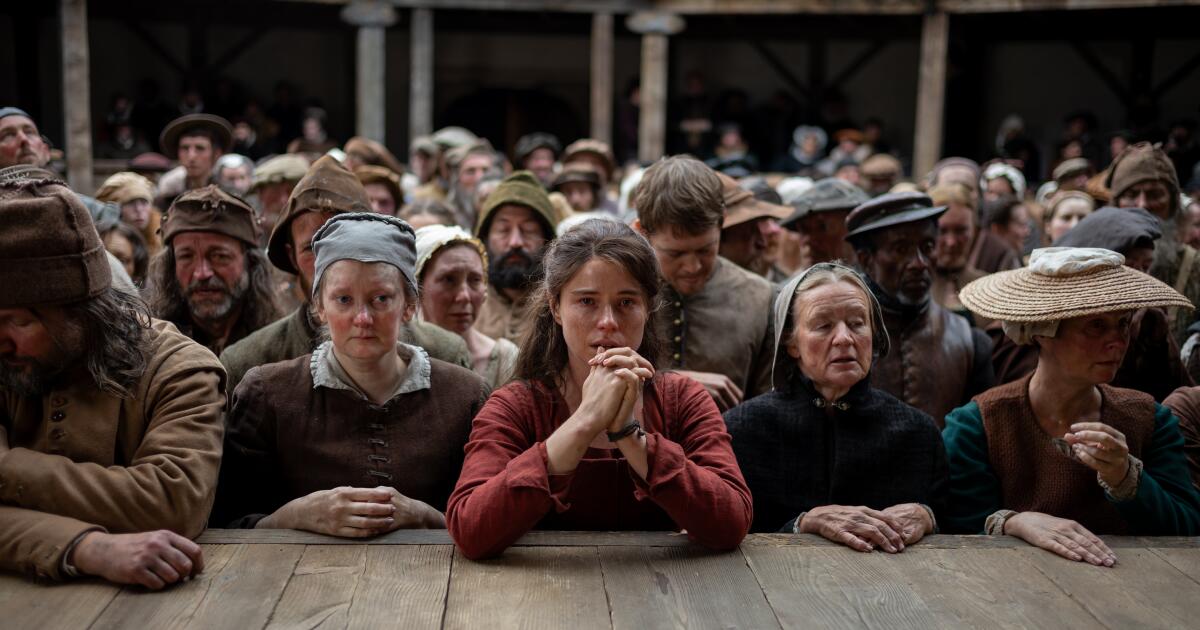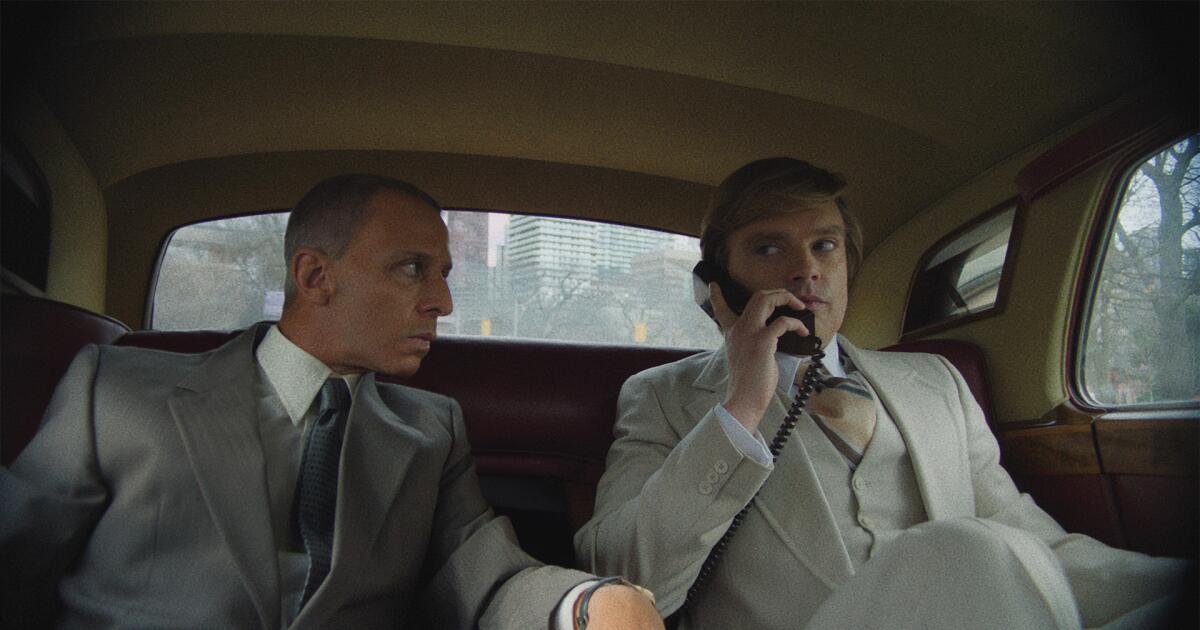Hoyte van Hoytema hurt his back. No, it wasn’t with one of the 54-pound Imax cameras the cinematographer wields for the films he made with director Christopher Nolan: “Interstellar,” “Dunkirk,” “Tenet” and, most recently, “Oppenheimer.” .
“It literally happens when I pick up small objects off the floor or something,” the bed-resting Dutch cinematographer says good-naturedly at the beginning of a Zoom audio interview.
The leap could be made that reflects what he and Nolan did with the great 65 millimeter technology for their film about J. Robert Oppenheimer, “the father of the atomic bomb.” Much of the film’s three-hour running time takes place up close in the faces of star Cillian Murphy and others. It was, to say the least, a novel approach to a cerebral epic about the device that ended World War II.
Van Hoytema, who was born in Switzerland, was educated at the legendary Lodz Film School in Poland (Krzysztof Kieslowski supervised one of his student projects) and began his career in Sweden with Tomas Alfredson’s “Let the Right One In,” among Others, I knew “Oppenheimer” would be simpler but perhaps more daunting than Nolan’s previous space- and time-spanning productions.
“I understood very early on that this was going to be a film about faces,” Van Hoytema recalls. “There it was, a very new challenge for us. In older films you could resort to long shots, to spectacle. This movie really turned inward; “It was about expressions, faces, intimacy, subjectivity.”
Long enamored of the 18K resolution achieved by Imax 65 film, Nolan and Van Hoytema never considered filming “Oppenheimer” with lightweight digital cameras. Panavision System 65 film cameras were also used for shots where sound and dialogue were crucial. However, some shots were taken with the wider gauge and much louder Imax for image sake, in the hope that the pre-recorded soundtracks could be looped in later.
“We love Imax,” says the director of photography. “Its visceral nature, its immersion. Traditionally, Imax has been applied to achieve breadth, grandeur and “overwhelm”, you might say. Here, faces became our landscapes. The eyes become the places where we filmmakers project our thoughts. “We knew we wanted to get closer with those cameras, to really be there.”
Like many Nolan productions, “Oppenheimer” unfolds across multiple timelines. The narrative before and during World War II is generally presented in color, while the physicist’s postwar conflicts, when anti-communist forces led by an aggrieved bureaucrat, Lewis Strauss (Robert Downey Jr.), stripped Oppenheimer of his security clearance, play an important role. in monochrome.
Color coding works as more than just a timestamp, perspective-wise.
“Oppenheimer’s point of view is our color material, Strauss’ point of view is our black and white material,” Van Hoytema notes. “Because Oppenheimer is clearly our protagonist, the vision of him is more visceral. Also, the physics experiments we see and all that are things he imagines in his head. Strauss’s are in black and white, and these two ways of filming are a great help for the audience to separate those two narratives. It’s still simple, but it’s much more of an emotional separation than a date and time separation.”
The sudden attack on the test explosion observers, including Oppenheimer (Cillian Murphy), iconically peering through a bunker window, had to be lit that way.
(Universal Photos)
Although much of “Oppenheimer” is close-up and intimate, the film’s central event is a huge explosion: the first atomic bomb test at Trinity, New Mexico. The metastasizing mushroom cloud was achieved through practical effects. The sudden attack on observers of the explosion, including Oppenheimer, iconically peering through a bunker porthole, had to be lit appropriately.
“We caused explosions,” although not nuclear, confirms Van Hoytema, laughing. “There is a lot of practical light being emitted. You can’t be very consistent with that; Every time you want a close-up you can’t just cause a gigantic explosion. So I had to replicate it with lighting and took advantage of how deep we are now in LED technology. All my light sources on set today are DMX controlled; We run it through dimming boards and can change the colors and intensity.”
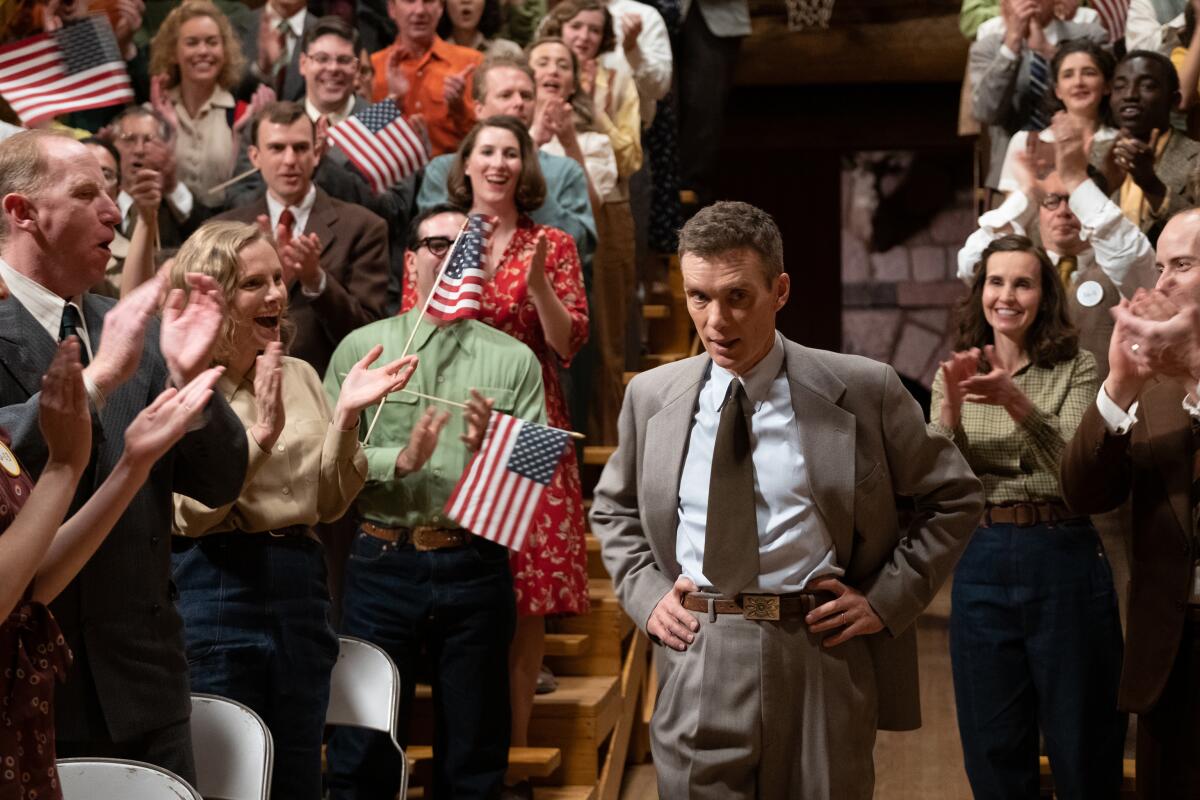
The magnitude of what he has created hits Oppenheimer at a rally celebrating America’s victory in World War II.
(Melinda Sue Gordon/Universal Pictures)
Perhaps a more devastating sequence focuses on Murphy. After Japan surrenders following the atomic bombing of Hiroshima and Nagasaki, Oppenheimer gives a victory speech to his enthusiastic scientists in a gymnasium in Los Alamos, the community he built to create the bomb. As he stood at the lectern, the horrendous implications of what he has unleashed finally hit the mission-focused physicist as Van Hoytema’s cameras zoomed in for atomic-level impact.
“At one point we began to really invade [Murphy]”says the director of photography. “I mean, the camera is really up his nose; There is no escape,” says the director of photography. “As an audience, you become part of his private thought bubble, so to speak. We took advantage of this very short depth of field, zooming in and out of focus, adding small steps filmed at slightly higher frame rates; it definitely adds this sense of imbalance and doubt to all of this.
“Another trick we developed with [visual effects supervisor] Andrew Jackson was projecting in the backgrounds. He sees a stone wall begin to glow and vibrate a little behind Oppenheimer, the world exploding and falling apart. We used projectors on set, then added little shakes and shakes to achieve that glowing effect. We did that several times in the movie, just to understand the structure of the world around him from Oppenheimer’s point of view.”

